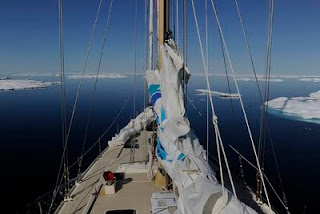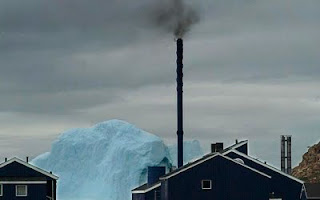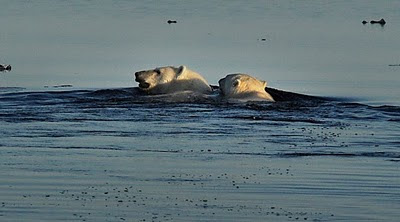I hear the arguments going on all the time in the lower 48. Skeptics versus scientists and all the "real"
people who live and work in the Arctic get lost and forgotten in this senseless debate. I firmly believe in the struggles of the real people and animals who live and work in the region to tell the story of a changing Arctic in a different but much more effective way than the scientists who produce effective but sometimes confusing data.
The two stories here offer real-life data in real time documenting the on-going future and trends in the
once frozen region:
Climate Change Leading to Starving Dogs
Lack of ice is hindering hunting in Greenland. Humans are not the only one who rely on hunting in, the dogs in Qaanaaq are starving.
The weather and climate change are causing problems in Greenland. Five years ago the sea ice had frozen in early November, making hunting for dog food easy, hunting both seals and fish.
This year it is unforeseen when the ice will freeze.
Northern Sea Route Closes for the Season
The Northern Sea Route shipping season is now over. New ice forming in the Arctic ocean hinders any more shipping. This is the longest shipping season ever, one month longer then last year.
The Perseverance was both the first and last vessel this year to go the route, the first one was the 29th of June and the last one today. The ship transported stable gas condensate from Murmansk in Russia to China, with the help of a Russian icebreaker. Russia’s Ministry of Transport believes cargo transport through the NSR will increase from 1.8 million tons in 2010 to 64 million tons by 2020.
Need any more proof that the Arctic is now open for business? The sad story from this is that the native peoples of the region will have a harder time sustaining themselves with the on-going
changes to their new environment.










